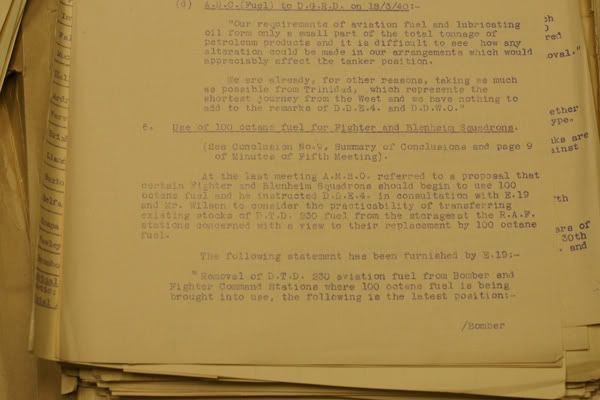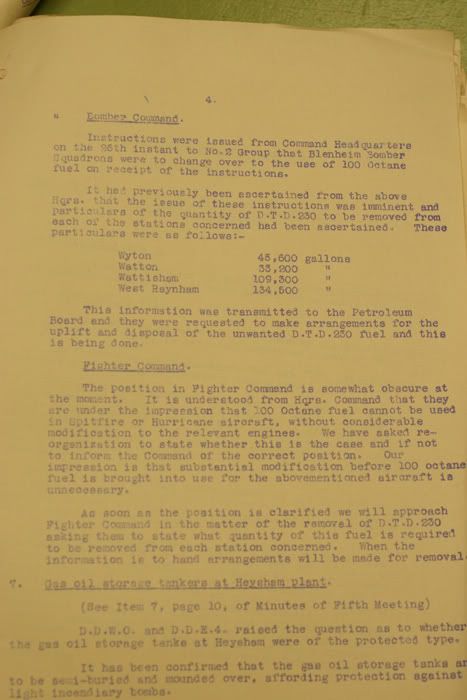
 |
|
#25
|
|||
|
|||
|
[QUOTE=Blackdog_kt;297896]In terms of Bomber Command usage, the pilot's operating handbook for the Blenheim Mk.IV confirms the above points.
Actually, the Mk.IV used both types of fuel. What happened? 1) They needed more range so they added two more fuel tanks, one in each wing (the outboard tanks). 2) This made the aircraft heavier so it needed more power to get off the ground safely when fully bombed-up and fueled. 3) Engines were modified and a boost cut-out installed, so that maximum boost could raised from +5 lbs to +9 lbs. 4) This needed fuel with more resistance to detonation (aka 100 octane), but it was also important for Fighter Command use. So, what they did was load 100 octane only in the outboard tanks and use 87 octane in the inboard tanks. etc. etc. Hi, I generally agree. I've heard of Blenheims using 100 octane in the outer tanks only for boosting purposes (presumably take off with heavy loads as you say). I don't have the Blenheim manual, unfortunately - do you have link perhaps? OTOH, the documents supplied by Glider suggest that the actual modus operandi was to have select Blenheim stations at No. 2 Group (Wytton, Watton, Wattisham, West Rayam) receiving only 100 octane fuel, with 87 octane removed at the same time from the storage tanks. I suppose this was probably done to avoid nasty incidents of mistakenly filling tanks w. 87 octane - its rather unhealty to loose all power due to engine failuire in heavily bomb laden bomber on takeoff..   Given the above, I believe in practice these Blenheims concerned were fueled with 100 octane only. Quote:
__________________
Il-2Bugtracker: Feature #200: Missing 100 octane subtypes of Bf 109E and Bf 110C http://www.il2bugtracker.com/issues/200 Il-2Bugtracker: Bug #415: Spitfire Mk I, Ia, and Mk II: Stability and Control http://www.il2bugtracker.com/issues/415 Kurfürst - Your resource site on Bf 109 performance! http://kurfurst.org 
|
|
|